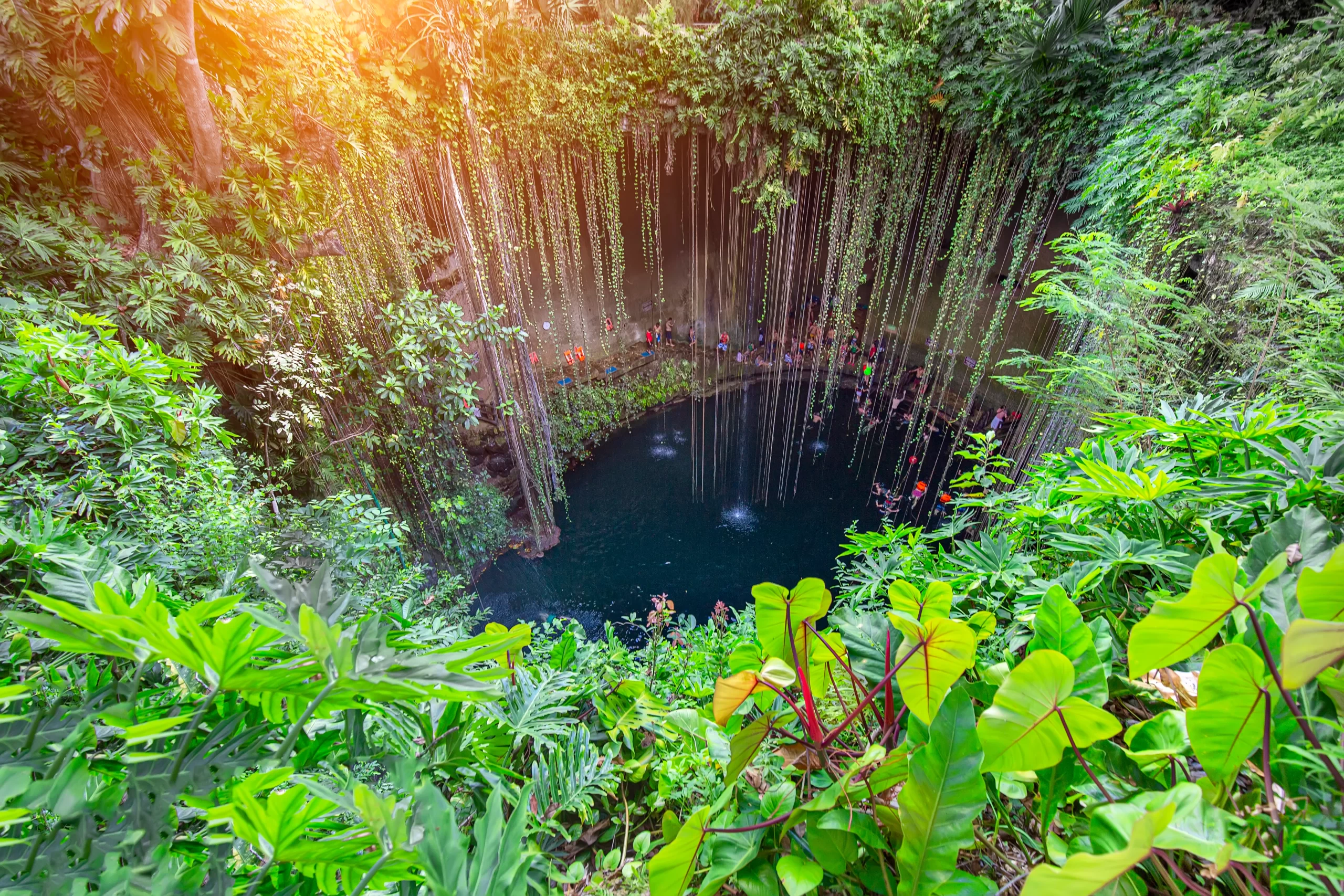The World Day for the Protection of Forests, celebrated on July 17, reflects on the importance of forests and their crucial role in the sustainability of the planet. Brazil is internationally recognized for having one of the largest concentrations of forests in the world, making it necessary to take proper care of this natural heritage. Experts point out that, with the implementation of appropriate policies, the country has the potential to become an ecological powerhouse.
Forests play a key role in regulating climate, conserving biodiversity, protecting water resources and providing essential ecosystem services for human life. In addition, they make a significant contribution to mitigating climate change by functioning as carbon sinks and reducing greenhouse gas emissions.
For Brazil to effectively become an ecological powerhouse and guarantee the preservation of its forests, it is necessary to implement effective environmental policies. This includes strengthening enforcement activities and combating illegal deforestation, promoting sustainable forest management practices, encouraging reforestation and recognizing the value of local communities that depend on forests for their livelihoods.
Through appropriate policies, Brazil can reconcile economic development with environmental conservation. Investing in a green economy, sustainable tourism and clean technologies generates jobs and economic growth, while preserving the country's natural heritage.
Unfortunately, deforestation is recognized as an ongoing and destructive problem with environmental, social and economic implications. However, there is a relevant issue that receives less attention: the growth of new forest areas. Through studies carried out by researchers at the University of Maryland and the World Resources Institute (WRI), it is possible to obtain a more precise answer about the extent of this phenomenon. According to available data, tree cover is being reestablished all over the world.
From 2000 to 2020, approximately 130.9 million hectares of land gained tree cover globally. This area corresponds to an extension greater than that of the territory of Peru. However, it is important to mention that, despite the significant increase in tree cover in the last two decades, the world has also suffered a considerable net loss, with a total reduction of more than 100 million hectares. In addition, it is essential to highlight that the growth of new trees does not compensate for the loss of old and carbon-rich forests.
This information provides an opportunity to analyze in which areas and for what reasons these gains occurred, opening up new possibilities for monitoring and improving forest restoration efforts on a global scale.
With regard to the gain in tree cover, the countries that stood out the most, in terms of extension, were Russia, Canada and the United States, responsible for 68 million hectares collectively. However, it is important to note that all these countries also experienced net tree cover losses during the same period. In total, 36 countries showed a net gain in tree cover, with distinct regional patterns.
European countries such as Ireland, Poland, Denmark and the Netherlands have seen some of the largest increases in tree cover. When considering the entire European continent, there is a net increase of 6 million hectares compared to the year 2000.
In Asia, for example, a significant number of countries experienced a net increase in their tree cover. Tajikistan and Kyrgyzstan, located in Central Asia, stand out along with Bangladesh, India and Pakistan, located in South Asia.
In Africa and the Americas, net gains were more limited. In South America, only Uruguay recorded a net gain in tree cover. In Africa, in turn, gains were observed in countries such as Sudan, South Sudan, Morocco and Algeria.
Given this perspective, the protection and sustainable management of forests are essential to ensure the preservation of biodiversity, the mitigation of climate change and the well-being of local populations. These actions must be supported by adequate policies and strategies, as well as financial and technological resources to drive sustainable forest management in all regions.
According to data released by the Amazon Institute for Man and Environment (Imazon), in the first five months of 2022, the Amazon suffered an alarming devastation, with the daily loss of more than 2,000 soccer fields of native forest. This deforestation rate represents the highest rate in the last 15 years for this specific period, highlighting the imminent threat that hangs over the Amazon region.
In the context of Amazon deforestation, the state of Pará stands out as the second largest deforester in the Amazon this year. With a deforested area of around 471 km², Pará represents 32% total in the Amazon. In addition, the state leads the ranking with more than a thousand lawsuits against deforesters in the region. With a land area of 1,245,871 km², Pará is home to approximately 9% of the world's tropical forests, according to The Nature Conservancy.
Deforestation in the areas of Pará, in addition to the obvious environmental damage, also poses risks to the health of traditional communities that depend on these forests. One of the main concerns is the advance of devastation in protected areas, such as conservation units and indigenous lands. In Pará, specifically, six of the 10 most deforested conservation units and four of the 10 most affected indigenous lands are located, as pointed out by Imazon.
Among the most threatened protection areas in Pará, the Tapajós Environmental Protection Area (APA) and the Tapajós National Forest (Flona) stand out. These regions face serious challenges regarding the preservation and conservation of their natural characteristics, demanding effective actions to protect and control deforestation.
Given these aspects, the preservation of forests plays a fundamental role for society, as it goes beyond guaranteeing essential biological processes. These natural ecosystems bring a series of benefits that directly impact people's lives.
One of the most significant benefits is related to water supply. More than 33% of the world's largest cities depend on forests for their drinking water. The quality of this vital resource, so necessary for health and development in both rural and urban areas, is directly linked to the proper preservation of forests. Responsible forest management plays a crucial role in maintaining water availability and quality.
Another important aspect is the supply of renewable energy. Forests play a significant role in generating clean, renewable energy. It is estimated that 40% of all renewable energy in the world comes from these ecosystems. Whether through the use of biomass, such as the burning of forest residues, or through the generation of hydroelectric energy, forests contribute to the diversification of the energy matrix and the reduction of dependence on fossil fuels.
In addition to these benefits, forests also play a crucial role in regulating the climate. By absorbing carbon dioxide (CO2) from the atmosphere, large forests help mitigate the effects of climate change. CO2 is one of the main gases responsible for global warming, and the ability of forests to capture it is essential to maintain climate balance.
The National System of Conservation Units and the protection of public forests in Brazil
The concept of public forests was established by the Forest Code of 1934, which determined the types of public forests specially protected, such as Environmental Protection Areas (APA), Areas of Relevant Ecological Interest (ARIE), National Forests (Flona), Extractive Reserves ( Resex), Fauna Reserves and Sustainable Development Reserves.
The legislation that regulates these areas is Law 9.985/00, responsible for creating the National System of Nature Conservation Units (SNUC). In this context, native species can be used in the productive chain of the forestry sector. In the western region of Pará, for example, sustainable forest management is carried out in the Tapajós National Forest, which generates employment and income, promoting the sustainable multiple use of natural resources.
In 2006, Law 11,284 came into effect, which establishes the management of public forests for sustainable production and creates the Brazilian Forestry Service. In national forests, it is possible to request open forest concessions from any company that meets the requirements of the Brazilian Forest Code and the bidding notice for the area. In the extractive reserves, whose objective is to preserve the traditional way of life, only the residents can carry out the management.
According to the current legislation, it is allowed to carry out forest management activities through concessions, which authorize the explorer to use the area in a sustainable way. The law determines that a national forest, such as the Tapajós National Forest in Belterra (PA), is in public ownership and domain. When created, the private areas within its limits must be expropriated, while the traditional populations that already inhabit the region can remain, as long as they are included in the unit's regulations and Management Plan, guaranteeing the sustainable use of the forest.
Forest management can be both timber and non-timber, and is a source of employment for local communities. Among the related activities are the inventory, cutting and dragging of logs, in addition to the use of forest residues for the production of furniture and handicrafts. This activity contributes not only to income generation, but also to the appreciation of forest resources and the sustainable development of communities.
The concession of forest management is foreseen in the Brazilian Forest Code as a way to avoid degradation and devastation of forests, as well as to promote sustainable management. Through this process, the aim is to increase the income of local populations and provide a better quality of life.
Public forests are managed by the federal government and are monitored by the relevant regulatory and inspection bodies. The harvesting process follows a series of requirements and procedures, including the use of GPS technology, which makes it possible to monitor the entire production chain, from the removal of the forest to the final consumer. This strict control seeks to guarantee the legality and sustainability of activities carried out in public forests.
The state of Amapá is home to the Tumucumaque Mountains, the largest national park in Brazil and the largest rainforest park in the world. With an impressive area of 39,000 square kilometers, this vast territory of virtually untouched nature is almost the size of the state of Rio de Janeiro.
The Tumucumaque Mountains are known for harboring a unique diversity of plant and animal species. The management of this natural treasure is the responsibility of Christoph Jaster, an environmental analyst at the Chico Mendes Institute for Biodiversity Preservation (ICMBio), who has held this position since 2003.
In addition to its importance in terms of biodiversity, the preserved nature of Tumucumaque also offers a wide range of resources, including medicines. Phytotherapy, for example, is a technique that studies the therapeutic properties of plants and vegetables for the treatment of diseases.
However, it is worth noting that herbal medicines were not always produced in laboratories in large cities. Throughout history, many of these medicines were obtained from the traditional knowledge of local communities, who explored the medicinal properties of plants found in the forest.
Preserving this natural heritage not only ensures the continuity of these valuable resources, but also protects ecosystems and promotes sustainability. The Tumucumaque Mountains is a notable example of this conservation effort, demonstrating Brazil's potential to preserve its natural riches for future generations.
In the context of continuous coexistence between human beings and nature, the need and the search for environmental preservation practices that promoted a harmonization of this interaction arose.
One of the solutions pointed out by experts is sustainable cultivation, which aims to balance economic and environmental benefits. Forest management is an example of a sustainable practice widely discussed and adopted. The Brazilian Forest Management Council (FSC Brasil) describes that it is possible to reconcile the use of natural resources with the conservation of forests and their ecosystems.
Sustainable forest management involves the application of responsible techniques in the extraction of wood and other forest products, guaranteeing the regeneration of exploited areas and the maintenance of biodiversity. In addition, efforts are made to respect the rights of local communities and workers involved in forestry activities.
Through sustainable cultivation, it is possible to obtain economic benefits, such as the creation of jobs and the production of natural resources, without compromising the integrity of ecosystems and the ecosystem services they provide. The conservation of biodiversity, the protection of water resources and the mitigation of climate change are some of the positive results that can be achieved through this approach.
The Ancestral Wisdom of the Yarang in the Struggle for the Preservation of the Amazon Rainforest

The preservation of the Amazon is a cause that involves a wide range of actors and covers several fronts. Known as “Guardians of the Forest”, these defenders dedicate their lives to protecting the largest tropical biome in the world, facing daily challenges and risks.
The Guardians of the Forest are, for the most part, members of indigenous communities that have inhabited the Amazon region for generations. They have a deep knowledge of the land and natural resources, as well as a strong spiritual connection to the forest. This ancestral wisdom is fundamental in the struggle to preserve the Amazon, as these guardians understand the importance of maintaining balance and harmony between human beings and the environment.
These guardians act on several fronts to combat illegal deforestation, the invasion of indigenous lands and illegal activities such as logging and rampant mining.
The activity of the Yarang, indigenous women who work for the regeneration of the Xingu forests, is inspired by leaf-cutting ants, also known as leaf-cutting ants. Like these ants, the Yarang carry with them ancestral wisdom passed down from generation to generation. In recent years, they have played a key role in harvesting seeds from trees native to the Xingu region, with a view to restoring deforested areas.
The diversity of faces involved in the struggle to preserve the Amazon reflects the importance and urgency of this challenge. They are women, men, youth, elderly, indigenous, non-indigenous, scientists, and many others, united in a common goal: to protect this unique and vital ecosystem for the health of the planet.
The preservation of the Amazon requires a comprehensive approach, which includes conservation actions, sustainable development, respect for indigenous rights and global awareness of the importance of the forest.
Under this premise, in addition to preserving traditional knowledge, the Yarang women also found a way to generate income through this activity. They are part of the Xingu Seed Network, a project created in partnership with the Instituto Socioambiental, which seeks to restore deforested areas within the Xingu Indigenous Park and its surroundings. Reforestation also takes place in areas with the sources of rivers in the basin, farms and settlements, with the aim of preserving life and biodiversity in the region. Women represent 65% of this Network's workforce. Since the beginning of the project, around 6,800 hectares of deforested areas have been restored, generating an income of R$ 4.4 million for the communities involved.
Magaró Ikpeng, one of the leaders of the movement, emphasizes the importance of this work not only for the indigenous people, but also for society in general. According to her, the survival of the indigenous people is directly linked to the preservation of the forest, and the benefits of this activity extend to everyone. Collecting the seeds provides Magaró with an annual income of approximately R$ 500, being a reward for something he already did naturally.
Seed collection takes place over about four months, starting in July. The Yarang women usually work in groups, going into the forest once a week. After harvesting, the seeds are transformed into “muvucas”, a mixture of different species and sand that has a germination capacity per hectare up to ten times greater than the traditional seedling planting.
The performance of the Yarang women in the Xingu forest regeneration is an inspiring example of how environmental preservation and the appreciation of traditional knowledge can go hand in hand, contributing to the conservation of biodiversity and the strengthening of indigenous communities.
Latex from Rubber Trees in the Amazon as a Source of Income and Preservation
Forest Day is an extremely important date to signal the ecological and socioeconomic relevance of forests in human life. In this context, the Amazon, as the largest tropical biome in the world, plays a key role in maintaining global biodiversity and generating essential natural resources for human life.
Among the valuable resources found in the Amazon is latex extracted from rubber trees, which plays a vital role in generating income for local communities living in the forest. Latex is the milky, viscous sap produced by rubber trees, a species of tree native to the Amazon region. This substance is the basis for the production of natural rubber, a versatile raw material with great commercial value.
The exploitation of latex in rubber trees has a long history in the Amazon, with the activity dating back centuries. Traditionally, latex extraction was done in a sustainable way, respecting the regeneration of the forest and the natural cycles of the trees. Local communities, mainly indigenous and riverside populations, have always played a fundamental role in this process, with their traditional knowledge being essential for the proper management of rubber trees.
Over time, latex from the Amazon has gained commercial importance and caught the attention of brands and designers seeking a more sustainable approach to fashion and design. Companies have been pioneers in the use of Amazonian latex for the production of accessories and garments, which are valued for their originality and environmental awareness.
These brands have adopted a responsible approach in their relationship with the Amazon, seeking partnerships with local communities to ensure that latex extraction is carried out in a sustainable manner and in compliance with the principles of respect for nature and the rights of traditional populations. This cooperation is essential to ensure that latex exploitation is carried out in an ethical and fair manner, directly benefiting the communities that live in the forest.
In addition to generating income for local communities, the sustainable use of latex also contributes to the preservation of the Amazon. By valuing standing forests and responsible latex extraction, these brands promote the conservation of rubber trees and forest ecosystems, preventing deforestation and environmental degradation.
The appreciation of Amazonian latex also has a positive impact on reducing pressure on other destructive economic activities, such as cattle ranching and illegal mining. By offering sustainable income alternatives to communities, latex exploitation helps discourage predatory practices and encourages forest protection.
However, it is important to highlight that valuing latex and promoting the sustainable use of this resource face challenges, such as competition with synthetic rubber and lack of financial and political support for forest management initiatives. Therefore, it is essential that governments, non-governmental organizations and private companies work together to create policies and programs that encourage and support the sustainable exploitation of latex and the conservation of the Amazon.
Protecting Forests in Times of Global Warming and Environmental Degradation
In the current context of accelerating global warming and increasing greenhouse gas emissions, the protection and conservation of forests emerge as crucial measures to face the environmental challenges that plague our planet. Forests play a key role in regulating the climate, acting as carbon sinks and contributing to ecological stability and sustaining life on Earth.
However, deforestation and the unsustainable use of natural resources have reversed this protective function of forests, making them sources of carbon dioxide (CO₂) emissions and accelerating climate change. In this sense, the protection of forests becomes more urgent than ever, as it is essential to preserve the environmental balance and mitigate the negative impacts of human activities.
In this context, it is important to highlight that the conservation of forests can bring significant benefits to all living beings, including animals, plants and human beings. This requires a joint effort from all sectors of society, from managers and politicians to the general population.
Adopting environmental education practices is essential to make society aware of the importance of protecting forests and adopting sustainable behavior. In addition, avoiding the indiscriminate use of fire in plant formations and promoting the correct disposal of waste are measures that can minimize the negative impacts on forest areas.
The application of the concept of the 3 R's of sustainability (Recycle, Reuse, Reduce) in the daily routine is also an effective way to contribute to the protection of forests, as it aims to reduce the excessive consumption of natural resources and minimize the impact on the environment. environment.
Another important action is to seek to acquire certified products, which guarantee the sustainable and responsible origin of the natural resources used in their production. In this way, it is possible to avoid indirect support for irregular deforestation and encourage the adoption of sustainable practices in the production chain.
In short, protecting forests is a shared responsibility. Through awareness, education and adoption of sustainable practices in everyday life, it is possible to contribute significantly to the preservation of forests and to the construction of a more balanced and harmonious future for our planet.




